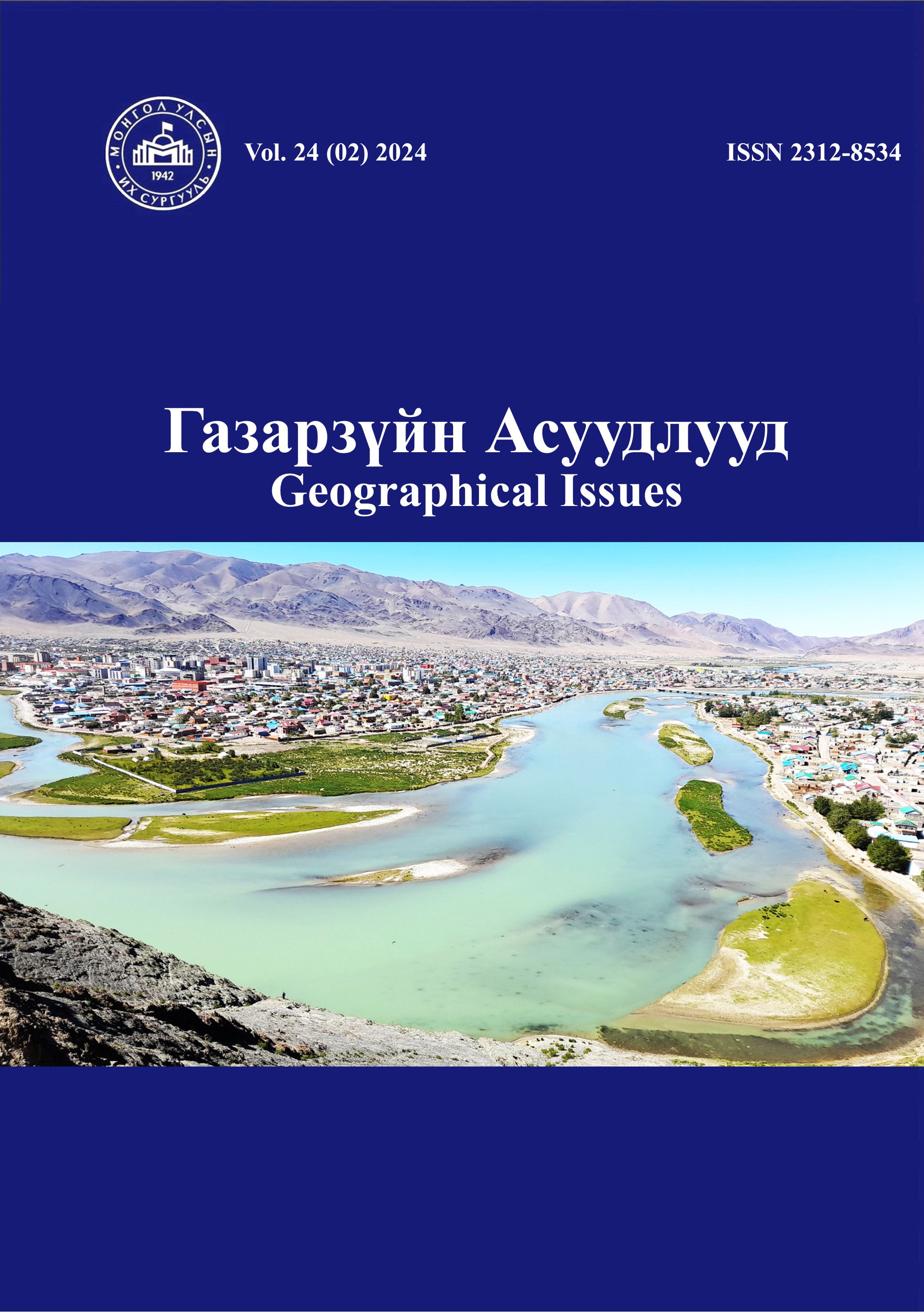The impact of faults on forming of the Chuluut Canyon, Central Mongolia
Чулуут голын хавцлын үүсэлд хагарлын нөлөө
Keywords:
Chuluut River, lava plateau, fault, morphometric analysis, canyonAbstract
Canyon formation is of significant interest in geomorphological studies of flowing waters, yet no studies have been conducted on this subject in Mongolia. Geomorphological methods were used to determine the shape and regularity of the Chuluut River Canyon, which is a major tourist destination. The development of the lava plateau forming the canyon was also assessed through morphological analysis. The study combined the analysis of morphometric and satellite images with field research data. The crust of the study area is ~45 km thick, with a lava plateau formed during the period from the late Miocene to the Pleistocene. The Chuluut River's orientation and the canyon formation were controlled by the main (Chuluut) fault, which extends from the southwest to the northeast, and orthogonal faults, intersecting it from the south to the north. The length of the Chuluut Canyon is about 32 km, the area is 9.3 km², the average width of the canyon is 230 meters, the depth is 58.4 meters, the volume of the canyon is 1.03 km³, and the average slope is 45°. As a result of fault activity, linear structures formed on the surface, folds developed on the mountain slopes, and faults appeared in the bedrock. These factors are the primary contributors to the canyon formation, influencing sharp bends in the river, with some stretches of the river flowing in a straight direction due to the fault. This fault had not previously been identified on geological or geomorphological maps or in other studies and it has been newly documented in this research.
Downloads
Downloads
Published
How to Cite
Issue
Section
License
Copyright (c) 2024 Geographical Issues

This work is licensed under a Creative Commons Attribution-NonCommercial-ShareAlike 4.0 International License.






